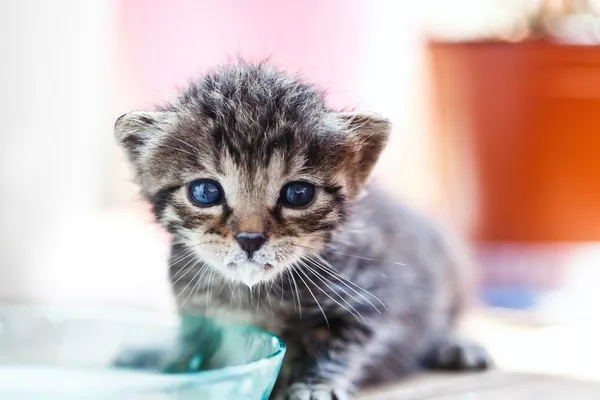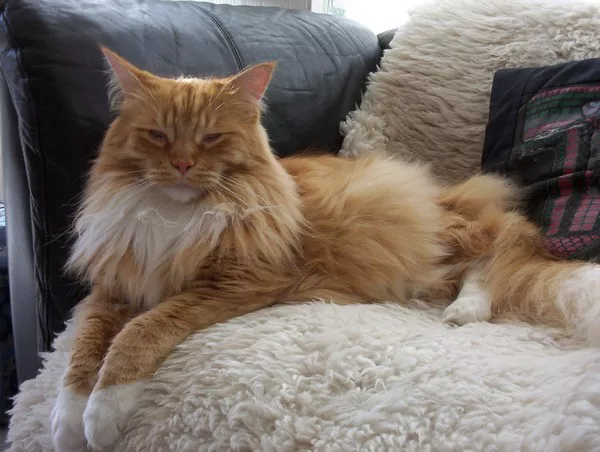Trying to figure out what breed Wisca is can be a fun but tricky task. There are many cat breeds, each with its own looks, traits, and behaviors. By looking closely at Wisca’s features, habits, and other signs, we can get closer to finding out its breed. This article will show you how to do just that.
Looking at Wisca’s Physical Appearance
One of the first things to check when trying to find out Wisca’s breed is its physical look. The size of the cat matters a lot. Some cat breeds are small. They may only weigh a few pounds when fully grown. Other breeds are big. A large-breed cat can weigh over 10 pounds easily. Measure Wisca from the tip of its nose to the base of its tail. Also, weigh it regularly. These numbers can give you a clue about its breed.
The shape of Wisca’s body is important too. Some breeds have long, slender bodies. They look like they are built for speed and grace. Other breeds have short, stocky bodies. These cats may seem more sturdy. Check Wisca’s legs. Are they long and thin, or short and thick? The length and build of the legs can tell you about its breed. For example, Siamese cats often have long, lean legs, while Munchkin cats have very short legs.
The head shape of a cat can also show its breed. Some cats have round heads. Persian cats are known for their round, flat-faced heads. Other cats have more triangular – shaped heads. The ears on Wisca are another thing to look at. Some breeds have big, pointed ears. These ears may stand straight up. Scottish Folds, on the other hand, have small, folded ears. Look at the size, shape, and position of Wisca’s ears.
Wisca’s eyes are a key part of its look. The color of the eyes can vary a lot between breeds. Some cats have bright blue eyes, like the Ragdoll breed. Others have green, yellow, or even odd-colored eyes. Check if Wisca’s eyes are big or small. Also, look at the shape of the eyes. Are they round, almond-shaped, or something else? These details can help you narrow down the breed.
Examining Wisca’s Fur
The fur of Wisca can give many clues about its breed. First, look at the length of the fur. Some cats have short fur. This type of fur is easy to take care of. Breeds like the American Shorthair have short, smooth coats. Other cats have long fur. Long-haired breeds, such as the Maine Coon, need more grooming. Their fur can get tangled if not brushed often.
The texture of Wisca’s fur is also important. Some fur is soft and silky. Persian cats have very soft, long fur. Other cats have coarser fur. The British Shorthair has a dense, plush coat that feels thick. Run your hand along Wisca’s back and sides. Notice how the fur feels.
The color and pattern of the fur can help identify the breed too. There are many colors, from white to black, and every shade in between. Some cats have solid-colored fur. Others have patterns. Tabby cats, for example, have stripes, swirls, or spots. Calico cats have a mix of three colors, usually white, black, and orange. Look closely at Wisca’s fur to see if it has any special colors or patterns.
Observing Wisca’s Behavior
How Wisca acts can tell you a lot about its breed. Some cat breeds are very active. They love to play and run around. Bengal cats are known for their high energy. They like to climb, jump, and chase toys. If Wisca is always on the move, playing with balls or climbing on furniture, it might be a breed that needs a lot of exercise.
Other cat breeds are more laid-back. They prefer to relax and sleep most of the day. Persian cats are often calm and quiet. They like to lounge around and get lots of rest. Notice how often Wisca plays. Also, see how it acts when it is not playing. Is it active or more of a “couch potato”?
Wisca’s social behavior is important too. Some cats love to be around people. They will follow you around the house and want to be petted all the time. Siamese cats are very social. They like to be part of the family. Other cats are more independent. They may only come to you when they want food or treats. Watch how Wisca interacts with you and other people in the house.
Checking Wisca’s Health and Medical History
The health of Wisca can give hints about its breed. Some breeds are more likely to have certain health problems. For example, Persian cats often have eye problems because of their flat faces. Maine Coons can have issues with their hips as they get older. If Wisca has any health problems, ask the vet if they are common in certain breeds.
The medical history of Wisca is also useful. If you adopted Wisca from a shelter or breeder, ask for its medical records. These records may show if it has been tested for any breed – specific diseases. Knowing the history can help you figure out the breed.
Comparing Wisca to Known Cat Breeds
Once you have noted down all of Wisca’s features, behaviors, and health details, it is time to compare. Look at pictures of different cat breeds online or in books. Read about the traits of each breed. See which breed’s description matches Wisca the most.
You can also visit a local cat show. At these shows, you can see many different cat breeds in person. Talk to the owners and breeders. They can tell you more about each breed’s looks and behaviors. This can help you see if Wisca fits into any of the breeds you see.
Asking for Expert Help
If you are still not sure what breed Wisca is, ask an expert. A vet can be a great help. Vets see many different cats. They may be able to tell you the breed based on their experience. They can also check for any physical signs that point to a certain breed.
A professional cat groomer can also offer advice. Groomers work with cats of all breeds. They know the different coat types and body shapes. They may have groomed cats that look like Wisca before. They can share their thoughts on what breed it might be.
Understanding Mixed – Breed Cats
Not all cats are purebred. Wisca may be a mixed-breed cat. This means it has genes from more than one breed. Mixed-breed cats can have a mix of traits from different breeds. They may have the body shape of one breed and the fur color of another.
Even if Wisca is a mixed-breed, you can still try to figure out what breeds are in its background. Look at its features and behaviors. Compare them to different breeds. You may be able to identify some of the breeds that make up Wisca.
Looking at the Origins of Cat Breeds
Learning about the origins of cat breeds can also help. Some breeds come from certain parts of the world. Siamese cats, for example, come from Thailand. If you know where Wisca was found or adopted, it can give you a clue. Cats from the same area may share some traits.
The history of a breed can also explain its features. Some breeds were developed for certain jobs. For example, the Norwegian Forest Cat was bred to live in cold, forested areas. This is why it has a thick, warm coat. Knowing the history can help you understand why Wisca has certain traits.
Considering the Influence of Environment
The environment where Wisca lives can also affect how it looks and acts. A cat that lives in a cold place may grow a thicker coat. A cat that has lots of toys and space to play may be more active. Keep this in mind when trying to figure out its breed. Do not rely only on its current look and behavior. Think about how the environment may have changed them.
Conclusion
Figuring out what breed Wisca is takes time and patience. Look at its physical appearance, fur, behavior, health, and more. Compare it to known breeds, ask experts, and consider if it is a mixed-breed. Remember to think about the origins of breeds and the influence of the environment. With all these steps, you can get closer to finding out the breed of your beloved Wisca. Even if you are not 100% sure, learning about cat breeds along the way can be a fun and rewarding experience.
Related topics:
























